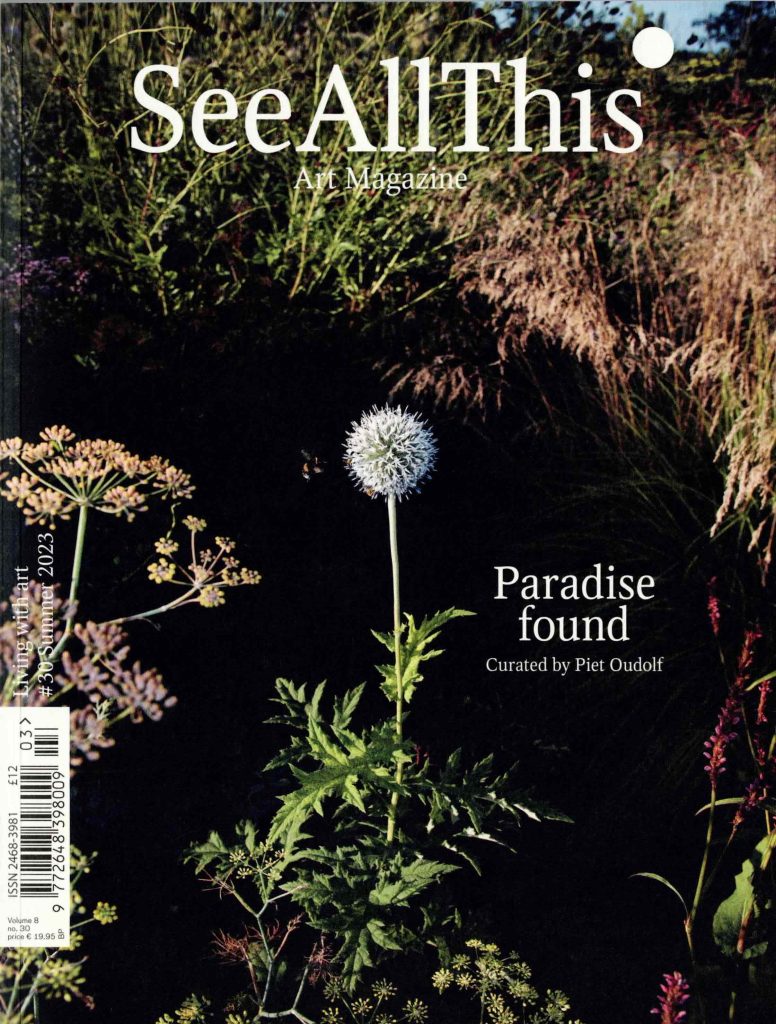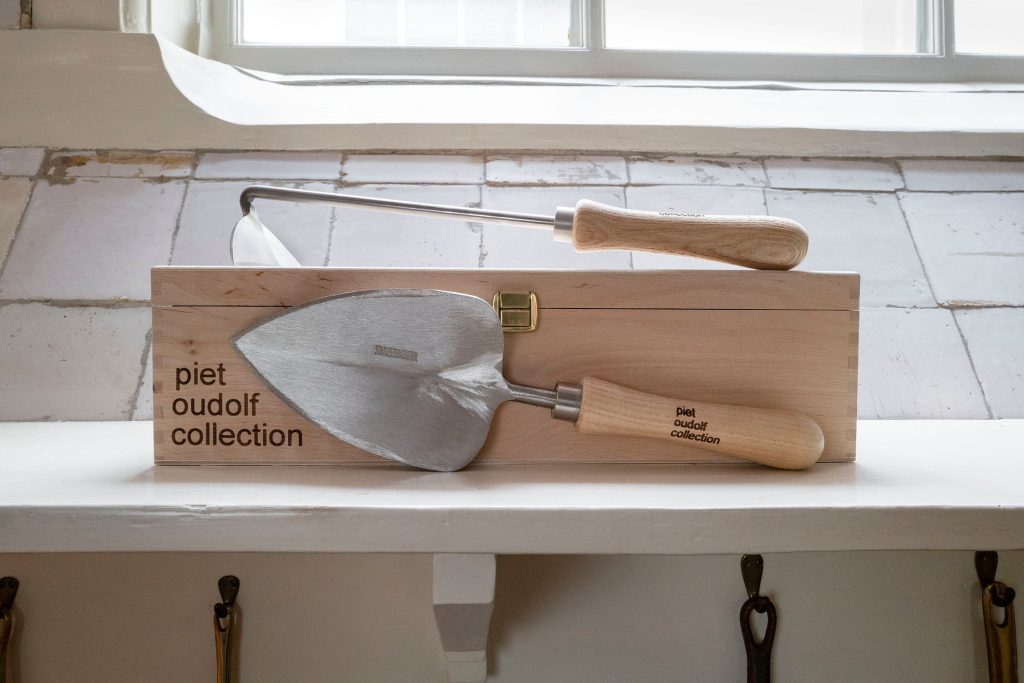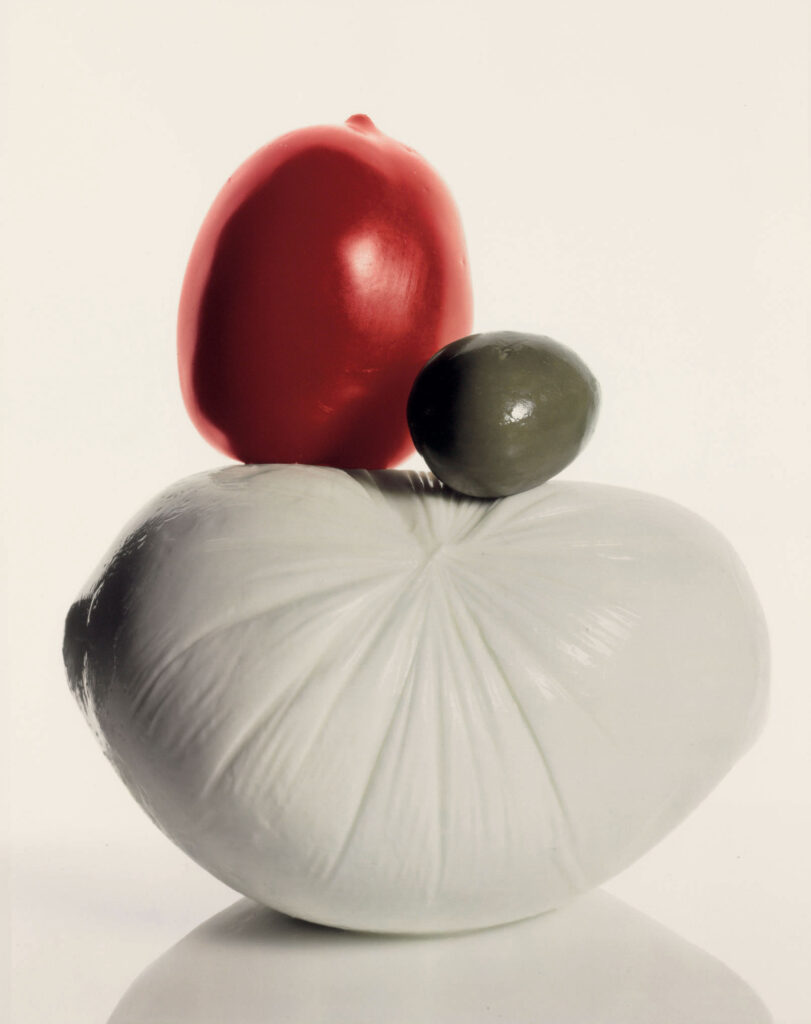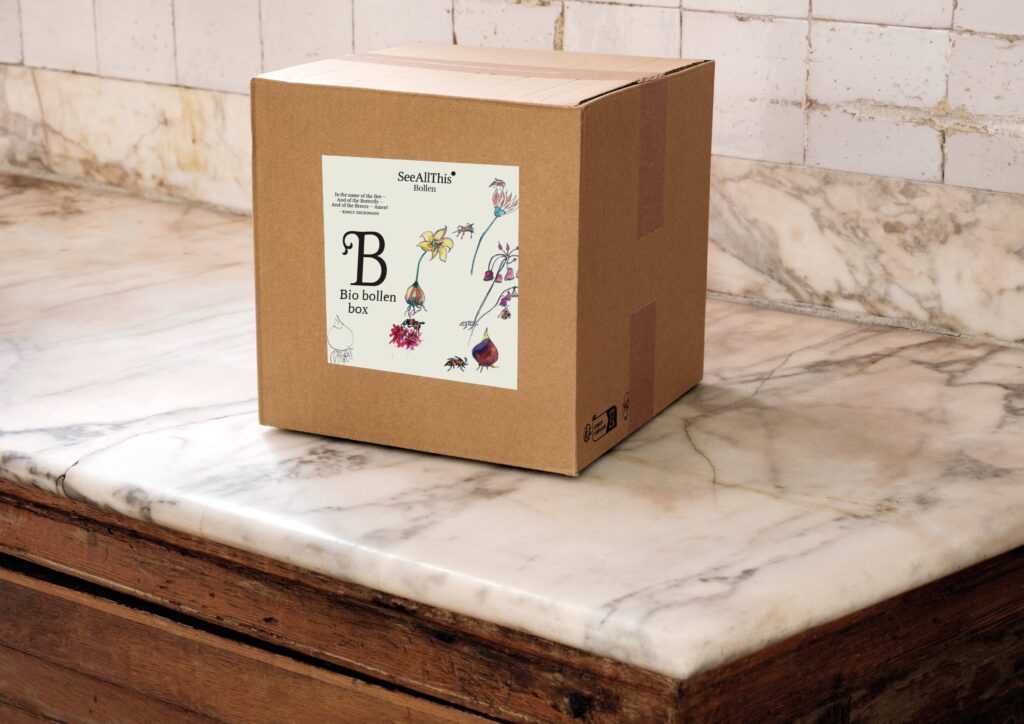Bio Flower Bulbs
Garden
Product: Bio Flower Bulbs
From crown imperial to wild tulip
Bring your garden to life with our exclusive bulb box, featuring 7 vibrant flower varieties, including crown imperial and wild tulip. Enjoy an abundant spring bloom while providing the very first pesticide-free nectar for bees and butterflies.
The box contains:
- Fritillaria ‘Early Dream’ — Crown Imperial {with tears}, 1 bulb
- Fritillaria meleagris — Snake’s Head Fritillary, 10 bulbs
- Allium ‘Mount Everest’ — Ornamental Onion, 5 bulbs
- Camassia leichtlinii ‘Caerulea’ — Camassia, 3 bulbs
- Ipheion uniflorum ‘Wisley Blue’ — Spring Starflower, 10 bulbs
- Triteleia ‘Silver Queen’ — Ithuriel’s Spear, 10 bulbs
- Tulipa turkestanica — Wild Tulip, 10 bulbs
Bulbs from Huiberts.
Planting time: mid-September to mid-December.
Suitable for gardens and balconies, in pots or borders.
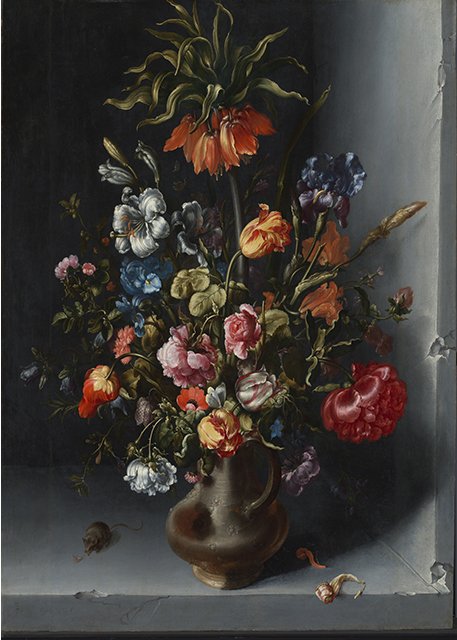
Fritillaria ‘Early Dream’
Crown Imperial {with tears}, 1 bulb
height: 60 cm
sun/shade: sun and partial sun
flowering: March–April
The origin of this fairy-tale plant lies in Turkey. In the mid-16th century, the crown imperial was introduced to Europe, where the botanist Carolus Clusius planted the first specimens in Leiden. The regal bulb was already highly popular at the time and appears in numerous paintings, such as Flower Still Life with a Crown Imperial by Jacob Vosmaer (1613). Many stories have been told about the visible ‘tears’ in its hanging flowers – for instance, that of a beautiful Persian queen whose beauty aroused the king’s suspicion. Accused of infidelity and banished from the palace, she wandered the fields in sorrow, shedding so many tears that she slowly shrank, her feet rooting into the soil.
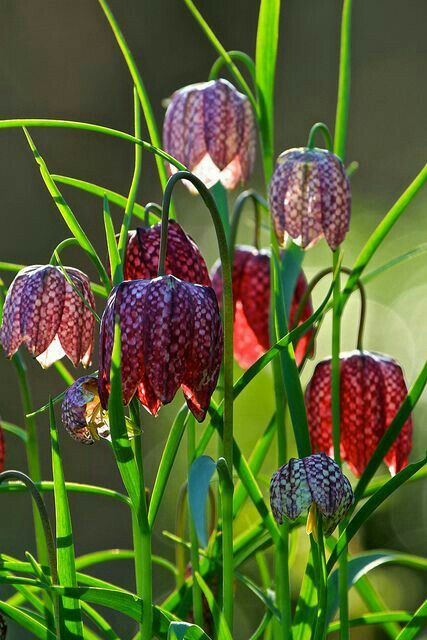
Fritillaria meleagris
Snake’s Head Fritillary, 10 bulbs
height: 30 cm
sun/shade: sun
flowering: April–May
Little beauty. The Snake’s Head Fritillary bears delicate chequered markings on its bell-shaped flowers. It belongs to the group of stinzenplanten – naturalised species found around castles, country estates, and city ramparts, though they did not originally occur in the region. From the sixteenth and seventeenth centuries onwards, noble families, farmers, and monks planted these bulbs in gardens and estates throughout the Netherlands. Strictly speaking, they are not native, yet over time they have become part of today’s ecosystems, forming a balance with fungi, insects, and birds. Other well-known stinzen species include crocus, snowdrop, grape hyacinth, and daffodil. The bulb of Fritillaria meleagris is sensitive to drying: plant as soon as possible after receipt.
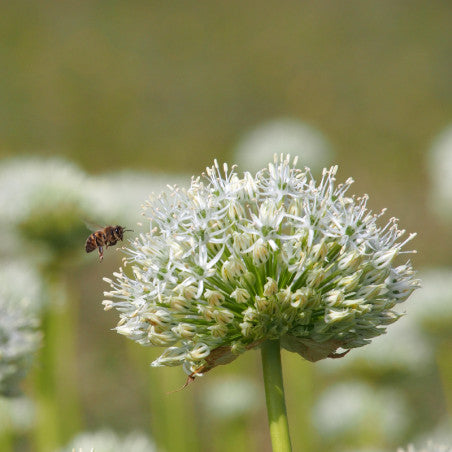
Allium ‘Mount Everest’
Ornamental Onion, 5 bulbs
height: 100 cm
sun/shade: sun/partial sun
flowering: June–July
The ornamental onion belongs to an ancient plant family: onions and garlic were prized in ancient Egypt and Mesopotamia not only as food, but also for their medicinal and ritual uses. Onion-shaped amulets have even been discovered in burial tombs. Allium ‘Mount Everest’ makes a striking impression, producing strong, upright stems topped with large, globe-shaped umbels of snow-white, star-like flowers. The flower heads can reach a diameter of 12–15 cm. This plant thrives in a sunny position with well-drained soil. The bulbs are hardy and return reliably each year, often with renewed vigour. Much loved by bees and butterflies, they make a valuable addition to a natural garden and pair beautifully with perennials.
Note: Avoid planting Allium directly beside Crown Imperial or Snake’s Head Fritillary. They are not companions and may inhibit one another’s growth.

Camassia leichtlinii 'Caerulea'
Prairie Lily, 3 bulbs
height: 60-70 cm
sun/shade: sun and partial sun
flowering: June-July
Also known as Camassia or Indian Potato Lily, this charming bulb was an important food source for Indigenous peoples and early settlers in parts of the American Old West. Camassia leichtlinii ‘Caerulea’ produces upright stems bearing clusters of lilac-blue, star-shaped flowers, each with a soft green bud at the centre. The buds open gradually from the bottom upwards, creating a long-lasting display. It thrives in nutrient-rich soil that drains well but is not too dry. After the first year, Camassia begins to multiply, as new bulbs form on the mother bulb once flowering has finished.

Ipheion uniflorum ‘Wisley Blue’
Spring Star or Starflower, 10 bulbs
height: 10-15 cm
sun/shade: sun/partial sun
flowering: March-May
This nearly forgotten, older selection, named after the Royal Horticultural Society Gardens at Wisley in England, has lilac-blue, star-shaped flowers that open successively. The blooms release a light honey fragrance. Small yellow stamens are partly hidden in the cup, with just their tips visible to passing bees. These bulbs multiply readily in lawns or borders (provided the area is not mown for six weeks after flowering, so the bulb can store energy through the fading foliage). An excellent companion for roses, as it helps to deter nematodes.
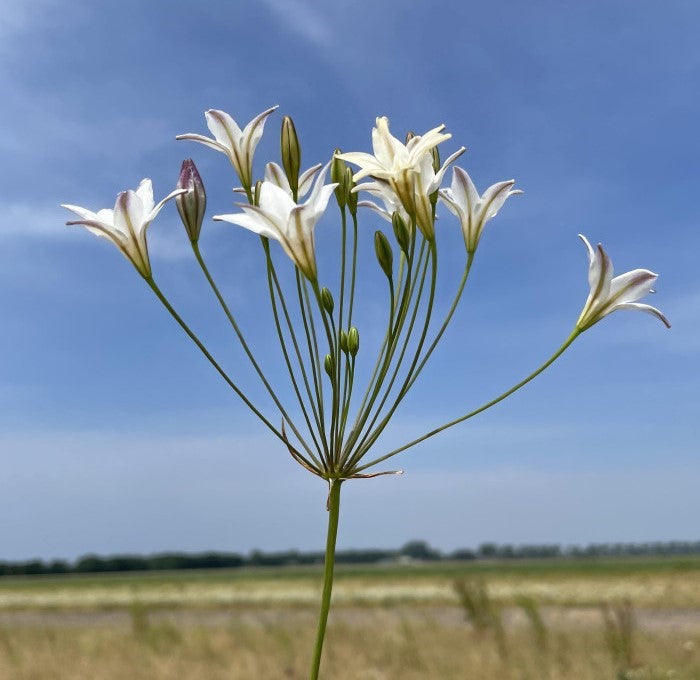
Triteleia ‘Silver Queen’
Ithuriel’s Spear, 10 bulbs
height: 40-50 cm
sun/shade: sun/partial shade/shade
flowering: June-July
Triteleia is also known as Ithuriel’s Spear, named after the angel in the poem Paradise Lost by John Milton. This plant bears airy, silvery-white, star-shaped flowers with a soft sheen and grass-like foliage. The bulbs dislike excessively wet conditions. Along the south-west coast of the United States, it grows abundantly in the wild and is eaten by deer and bears. Highly suitable for naturalising, but equally striking when planted informally in a container or border.
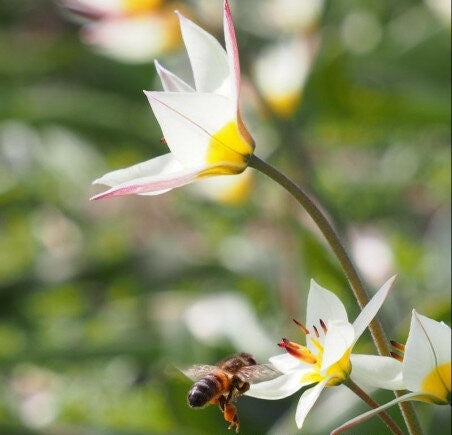
Tulipa turkestanica
Wild Tulip, 10 bulbs
height: 15-20 cm
sun/shade: sun/partial shade
flowering: March-April
Tulipa turkestanica is an elegant, naturalising wild tulip that flowers early in spring, producing several small, star-shaped blooms per stem. Its ivory-white petals with a soft yellow centre open wide in the sun and close again at dusk. Tulips were introduced to the Netherlands from Turkey in the late sixteenth century and soon became highly coveted luxury items. They were collected and studied by botanists, artists, and enthusiasts, and even became the focus of the world’s first economic bubble: tulip mania. Particularly rare and extravagant varieties are depicted in seventeenth-century Dutch flower still lifes. This naturalising Turkestanica multiplies readily in rock gardens, borders, or containers, provided it receives sufficient sun.
